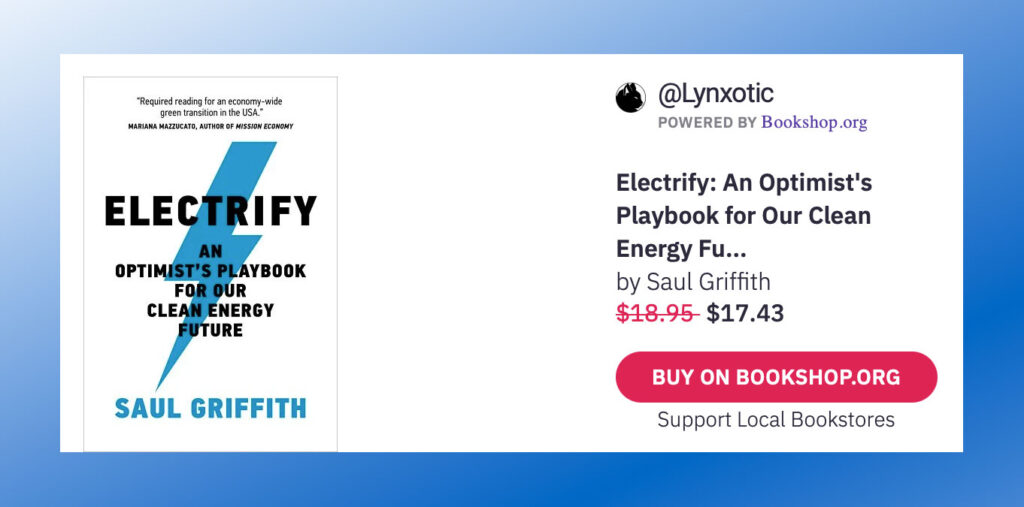Climate Solutions
Microgrids and Distributed Solar Energy can Change our Future
Published
2 years agoon
Forces are aligning to accelerate the inevitable: a decentralized solution for power production and distribution
Today it is not easy to imagine a world where the centralized electrical grid has become unnecessary and its use is discontinued. In such a world, distributed energy systems, such as localized microgrid power plants, will have become the primary means of generating and distributing electricity.
In this world, communities and businesses would generate their own electricity using a combination of renewable energy sources, such as solar and wind power, and local energy storage systems. These microgrids would be connected to one another, forming a decentralized network of energy production and distribution.
As a result of this shift, the need for large centralized power plants and transmission lines would eventually be eliminated. Instead, energy would be generated closer to the point of consumption, reducing the enormous transmission losses and costs inherent in the current centralized systems. Additionally, because microgrids can operate independently, they would be less vulnerable to disruptions caused by natural disasters or cyber attacks, leading to increased energy security and reliability.
Furthermore, in this future scenario, individuals, communities and businesses would have greater control over their energy production and consumption. For example, excess energy generated by a community’s microgrid could be shared with neighboring communities or sold back to the grid or grids. Consumers would be able to choose from a variety of energy service providers, leading to more competition in the market and lower costs for consumers.
The use of renewable energy sources would also be the default in this world, as microgrids would allow for more efficient use of resources and can help to improve the overall reliability of the system. The integration of renewable energy sources as standard would also lead to an overall more rapid reduction in greenhouse gas emissions and other pollutants, which would have a cumulative positive impact on the environment and public health.

The concept of energy poverty would be greatly reduced as well, as microgrids can provide greater access to electricity and economic opportunities for marginalized communities. Furthermore, the shift towards microgrids would also promote local economic development and job creation, as sustainable microgrid power plants can be owned and operated by individuals, communities and small businesses.
Overall, the ultimate end scenario, when the centralized electrical grid has become unnecessary and its use is discontinued, would be one where communities and businesses have greater control over their energy production and consumption, leading to increased energy security and reliability, lower costs for consumers, and a reduction in income inequality and environmental impact.
There are massive forces already marshaling to protect the legacy systems
The potential for distributed power plants, virtual power storage systems, and sustainable production and consumption in close proximity to one another is unlimited.
However the existing systems, still based primarily on fossil fuel powered, centralized power plants and a huge grid network (3 in the US, to be precise) for distribution, with all the attendant problems, are already being targeted for massive expansion and renovation.

The US centralized power grid system, as we know it, is facing several major challenges as the demand for electricity continues to rise. One of the most significant problems is the aging infrastructure. Many of the transmission lines, substations and power plants that make up the grid were built decades ago and are in need of upgrading or replacement.
The likely time and cost to upgrade and repair the systems is extreme, measured in years and even decades and billions if not trillions of dollars.
This not only poses a risk to the reliability of the system but also leads to increased maintenance costs. Furthermore, as the population continues to grow and urbanize, the demand for electricity is increasing and the centralized grid is struggling to keep up with the rising demand.
“Because DERs are sited and in many cases controlled by non-utility actors, grid operators may not have as much insight into their performance as they would into a conventional power plant, requiring changes to operational and planning frameworks. In addition, many utilities’ business models rely on expanding sales from a more-centralized grid system”
ACEEE.org
Another major problem is the increasing amount of intermittent renewable energy sources, such as solar and wind power, that are being integrated into the grid. These sources of energy are often located in remote areas, far from population centers, and the cost of transmitting this energy over long distances can be prohibitively expensive. Additionally, traditional centralized power plants are not well-suited to handle the fluctuations in power generation that can occur with renewable energy sources.
Many solutions are ready to implement, once the will and message are aligned
The case for rapid deployment and a shift to distributed power systems can be further augmented and buttressed by the potential of incorporating architectural designs that are 90% more energy efficient. One of the most effective methods of achieving this level of energy efficiency is through the use of ultra-high performance building design methods.
A 90% greater energy efficiency can be established as an international standard for energy-efficient building design, and is already well established under the passive house standard. It is based on the principle of designing buildings to be highly insulated and airtight, with minimal thermal bridging, in order to reduce heat loss in the winter and heat gain in the summer.
This leads to significant energy savings, as buildings require 90% less heating and cooling, and therefore far less energy is consumed. This method also includes the use of high-efficiency windows and doors to reduce heat loss and gain, and are designed to take advantage of natural light and heat from the sun.
Ultra-high performance buildings, also known as net-zero energy buildings, take hyper-efficient design to the next level by incorporating renewable energy technologies such as solar panels, wind turbines, and geothermal systems. They are designed to generate as much, or more, energy than they consume, and when combined with energy storage systems, ultra-high performance buildings can be completely self-sufficient and produce more energy than they consume.
When combined, these design methods can create buildings that are not only highly energy efficient but also comfortable, healthy, and resilient. These buildings are designed to maintain a consistent indoor temperature and humidity levels, providing a high level of indoor air quality, while also being able to withstand extreme weather conditions.
In addition, setting a 90% more energy efficient standard would also greatly reduce the carbon footprint of the building sector, which is one of the largest contributors to greenhouse gas emissions. By reducing the energy consumption of buildings, by the maximum amount that established methods are capable of, we can accelerate the reduction of our dependence on fossil fuels, and far more effectively mitigate the effects of climate change.
Changing direction to improve the odds of success, not just survival
As the shift begins to take hold, and a distributed, hyper-efficient system begins to be the dominant direction, many benefits could arise. Gone would be the days of blackouts and brownouts caused by failures in the centralized grid. Microgrids are designed to operate independently, meaning that if there is a disruption in one area, the rest of the system can continue to function normally. This increased resilience also makes micro-grids more resistant to natural disasters and cyber attacks.
With the decentralization of energy production, the cost of energy would decrease significantly. Consumers would no longer be at the mercy of large utility companies, and competition among small, community-based energy providers would drive prices down. Additionally, the excess energy generated by microgrids, and unneeded due to 90% greater efficiency in building designs, could be sold back to the grid, providing a significant source of income for the community.
In this world, income inequality is reduced as access to electricity and economic opportunities is improved for marginalized communities. Remote or rural areas that were previously off the grid now have access to reliable and affordable energy, which improves living standards and reduces poverty.
Furthermore, the shift towards microgrids can lead to a boost in local economic development and job creation. The ownership and operation of micro-grid power plants are often in the hands of individuals, small businesses and communities, leading to a stronger local economy.
The future world where microgrids are the norm is not just a utopia for energy production and distribution, but it also has a positive impact on the environment. With the widespread use of renewable energy sources, greenhouse gas emissions have decreased dramatically and the air is cleaner.

The goal of reaching a future state, a world where the centralized electrical grid is no longer necessary, and its use has been discontinued, is a world where energy is generated and distributed by a network of small, decentralized power plants and storage systems. This world is characterized by increased resilience, reduced costs, improved access to electricity, reduced income inequality, local economic development, and job creation and a cleaner environment. It’s a future worth striving for.
References:
“Microgrids: An Overview” by the National Renewable Energy Laboratory (NREL)
“The Future of the Electric Grid” by the Department of Energy
“The Microgrid: An Innovative Solution for a Sustainable Energy System” by the International Journal of Electrical Power and Energy Systems
“Microgrids and the Future of Energy” by the Harvard Business Review
“Passive House Standard” by the Passive House Institute US (PHIUS)
“The Passive House Standard” by the Passive House Institute (PHI)
“Net-zero Energy Buildings” by the National Renewable Energy Laboratory (NREL)
“Passive House and Net Zero Energy Buildings” by the International Energy Agency (IEA)
Please help keep us publishing the content you love
Lynxotic may receive a small commission based on any purchases made by following links from this page


